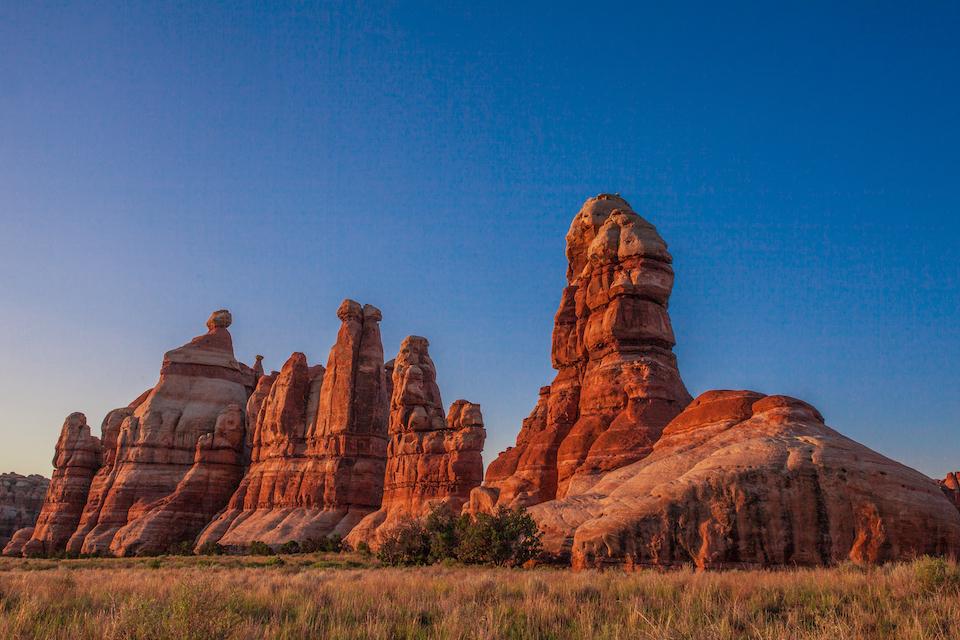
Wildlife will require temporary climbing closures in Arches and Canyonlands national parks throughout the year/NPS, Emily Ogden
So as to protect critical wildlife habitat for raptors and desert bighorn sheep, a number of climbing routes in Canyonlands and Arches national parks in Utah will close for up to six months each year. This temporary closure affects the following routes:
Canyonlands National Park
- Century Crack, Witness the Wilderness, Necronomicon (Book of the Dead), Army of Darkness, Chip and Dale Towers, and Candlestick Tower: closed March 1 – August 31.
- Charlie Horse Needle, Moses and Zeus, Airport Tower, Washer Woman, and Monster Tower: closed March 15 – August 15.
Arches National Park
- Harkonnen Castle (Dune), Canyonlands by Night, El Secondo, The Coup, Crohn’s Wall (Left Route, Crohn’s Odyssey, Project One, Project Two), Klondike Bluffs Crack, The Bouquet (Route One & Route Two), Cuddle Bunny Tower, False Start, North Marcher, Sand Hearse, Unknown Marching Men, Fun Ramp, The Hyena, Trail of the Navajo, Pop Tarts, and Escape Route: closed March 1 – August 31.
- The Three Penguins (all routes) and Tonka Tower: closed March 1 – August 15.
- The Pickle: closed April 1 – August 31.
- Industrial Disease: closed December 1 – September 30.
During the closure period, park biologists will survey these areas and may reopen routes prior to the scheduled date. Climbers are advised to monitor route status on park websites or by contacting the backcountry office at e-mail us or 435-259-4351.
Climbers should be aware of and abide by the following regulations and leave no trace practices while climbing in either park:
- White chalk is prohibited. Chalk must be similar in color to the rock being climbed.
- The physical altering of rock faces by chiseling, glue reinforcement of existing holds, gluing of new holds, and the intentional removal of lichen or plants from rock are prohibited.
- Rock climbing should be mostly free climbing or clean aid climbing.
- Any new installation of fixed gear requires a permit. If an existing item or fixed anchor is judged unsafe, it may be replaced, in kind, without a permit. Bolts, hangers and chains must be painted the color of the rock surface.
- Protection may not be placed with the use of a hammer except to replace existing belay and rappel anchors and bolts on existing routes, or for emergency self-rescue. The use of motorized power drills is prohibited.
- If an existing software item (sling, etc.) is unsafe, it may be replaced. Software left in place must match the rock surface in color.
- Leaving fixed ropes in place for more than 24 hours is prohibited, unless the park has been notified.
- Slacklining (or “highlining”) and BASE jumping are prohibited.
- Guided rock climbing services are prohibited.
- ALL overnight backcountry use in either park requires a permit.
In addition, at Canyonlands National Park:
- No camping is allowed at the trailhead to Zeus and Moses.
- A day use permit is required for all travel on the White Rim Road and backcountry roads in The Needles.
- Information on permits can be found at https://www.nps.gov/cany/planyourvisit/permitsandreservations.htm
In addition, at Arches National Park:
- Rock climbing groups are limited to five persons per group.
- Bivying overnight is not allowed.
- All persons planning to climb in Arches National Park are encouraged to register by obtaining a free permit on-line (archespermits.nps.gov), or self-register at the kiosk in front of the visitor center.
- Information on canyoneering can be found at www.nps.gov/arch/planyourvisit/canyoneer



Add comment